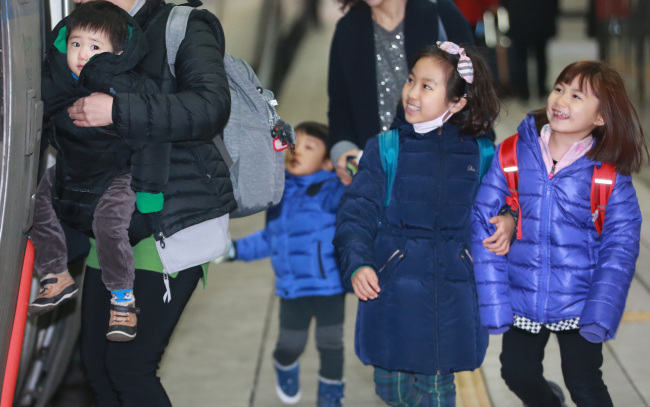Early diagnosis crucial for children’s optical health
By Claire LeePublished : Feb. 26, 2015 - 21:11
Health experts recommended for all children aged 6 to 7 to get their eyes examined before attending elementary school, as developing eye diseases and conditions at a young age can lead to permanent visual impairment.
“Most of such conditions are treatable and preventable,” said optometrist Im Gi-hwan, who practices at Ewha Womans University Mokdong Hospital in Seoul.
“But it is important for parents to pay close attention and detect such conditions early, as many children may not be able to do it themselves.”
“Most of such conditions are treatable and preventable,” said optometrist Im Gi-hwan, who practices at Ewha Womans University Mokdong Hospital in Seoul.
“But it is important for parents to pay close attention and detect such conditions early, as many children may not be able to do it themselves.”

A common vision problem in children is amblyopia, a condition in which poor vision is caused by the eye and brain not working together as they should. In most cases, only one eye is affected, but it sometimes affects both eyes.
“If your child holds a book too closely while reading, or closes one eye when trying to see something from a distance, she or he may have amblyopia,” Im said.
Many kids with the condition report having trouble participating in gym class or with their schoolwork.
Experts say amblyopia, which is often called “lazy eye,” is a developmental problem of the brain rather than a problem within the eyes. However, it can cause permanent loss of vision if not treated early.
Improvement in vision can be attained if treated before age 10.
“It can be more difficult to treat the condition once a child reaches age 10,” said the doctor. “The earlier treatment starts, the better.”
Another condition to watch out for is strabismus, which causes the eyes to look in different directions. For example, while one eye looks forward, the other eye turns either outward, inward, downward or upward.
According to Ewha Womans University Mokdong Hospital, about 2 percent of South Korean children are affected by the condition. If not treated early, strabismus can develop into amblyopia.
Most children with strabismus are diagnosed between ages 1 and 4. The condition can also be present at birth, and the cause is unknown in most cases. It is recommended to see an optometrist immediately when symptoms are detected.
Sometimes children can have both strabismus and amblyopia at the same time. They are often recommended to wear an eye patch over the unaffected eye. The patch forces the affected, misaligned eye to be more active.
This, over time, can help strengthen the muscles of the affected eye and eventually restore proper alignment.
Im explained that most children reach full visual maturation around age 8, when crucial connections between the brain and the eyes are formed. “That is why early intervention and treatment for children’s vision problems are important,” he said.
Like amblyopia, it is important for strabismus in young kids to be detected and treated early. Children who receive early treatment for the condition have a higher chance of developing good vision and properly aligned eyes, studies show.
By Claire Lee (dyc@heraldcorp.com)




![[KH Explains] No more 'Michael' at Kakao Games](http://res.heraldm.com/phpwas/restmb_idxmake.php?idx=644&simg=/content/image/2024/04/28/20240428050183_0.jpg&u=20240428180321)






![[Grace Kao] Hybe vs. Ador: Inspiration, imitation and plagiarism](http://res.heraldm.com/phpwas/restmb_idxmake.php?idx=644&simg=/content/image/2024/04/28/20240428050220_0.jpg&u=)






